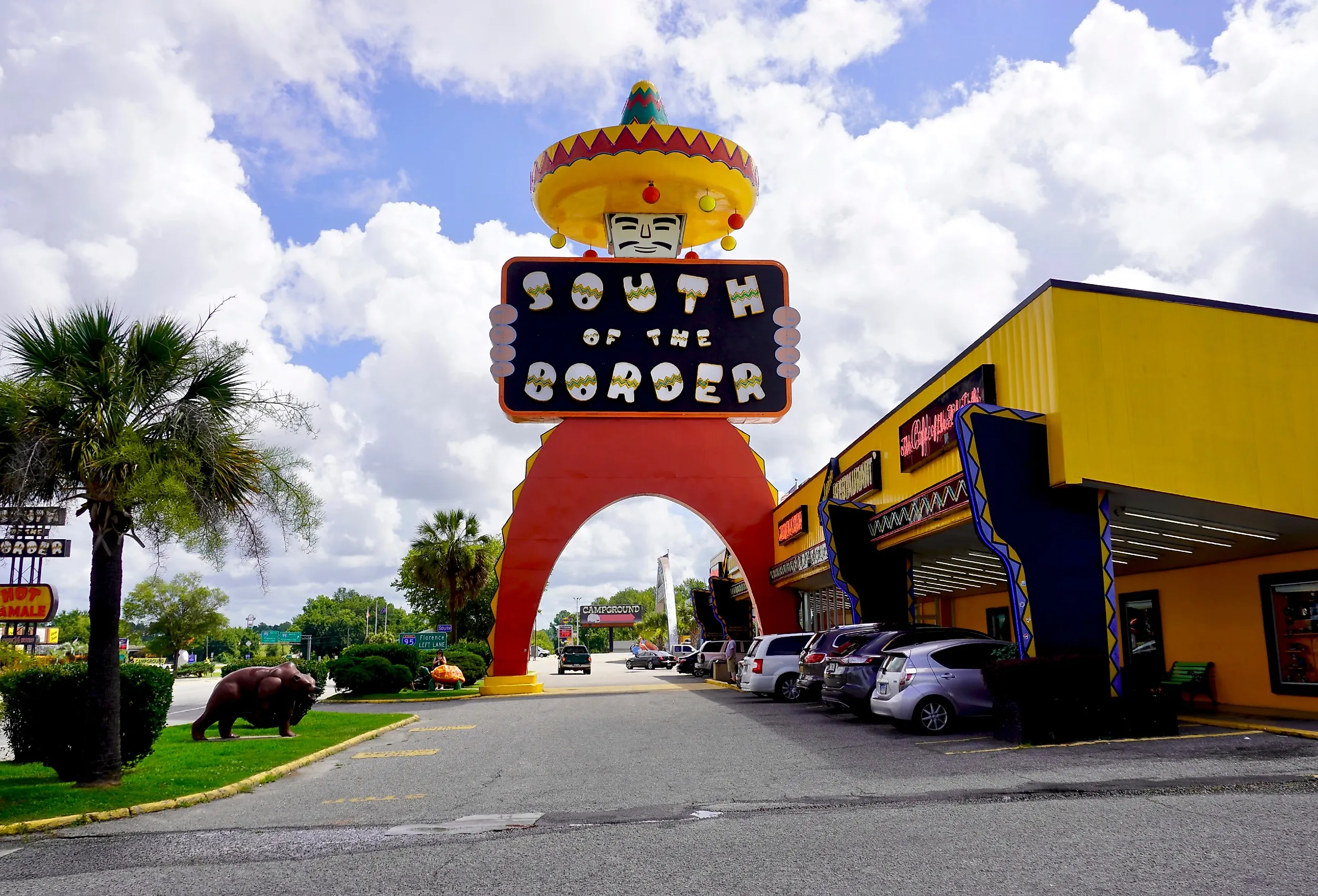
10 Strangest Landmarks in South Carolina
Once known as "The Iodine State," South Carolina, now better known as "The Palmetto State," boasts over 187 miles of Atlantic coastline. The state also houses an island, Morgan Island, that is home to 4,000 monkeys. In addition to these unusual facts about South Carolina, travelers have come to discover that the state also houses many strange landmarks. From controversial, history-related landmarks having to do with state senators to beautiful, natural landmarks that are part of the state's natural beauty, South Carolina has its share of oddities. Whether you are a local or a visitor, these strange landmarks in South Carolina should not be missed.
Peachoid Water Tower, Gaffney
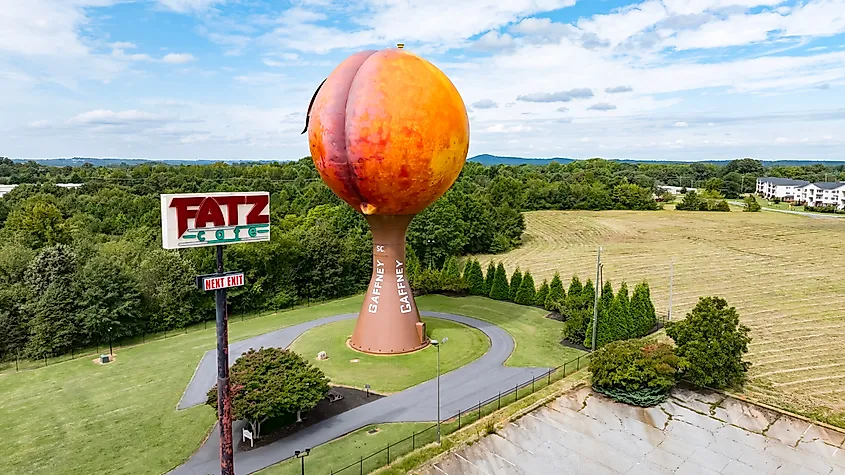
The Peachoid Water Tower is a 135-foot-high, one-million-gallon water tank shaped like a giant peach in Gaffney, Cherokee County. It was built by the Gaffney Commission of Public Works in 1980 to stress the fact that South Carolina, not Georgia, is the biggest peach producer in the South.
Artist Peter Freudenberg designed the Peachoid Water Tower, which is intended to show the painted texture of what a peach looks and feels like. It is located on Peachoid Road, which is easily accessible from I-85. Take the exit for South Carolina Highway 11, Cherokee Foothills Scenic Highway, to view this unique fruit-themed landmark.
Thelma and Louise, Hardeeville
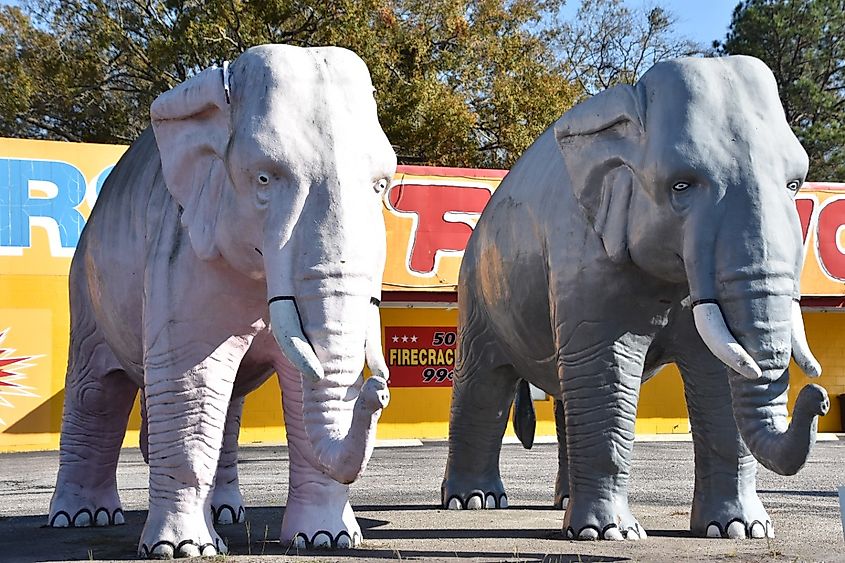
While not related to the fictional Thelma and Louise of movie fame, this pair of Thelma and Louise are statues of elephants found in Hardeeville, Jasper County. Named Big Al and Lizzy, they sit in front of Crazy Joe's Fireworks off I-95, guarding the store in their pink and gray pastels. The elephants are life-sized, protected by a sheltered roof, and are repainted regularly to maintain their colors.
Originally from Alabama, the owner of Papa Joe's Fireworks (where the elephants sat until 2022) had them shipped to Hardeeville in 1974 to sit in the parking lot of his store. It might be difficult to get a selfie with Thelma and Louise (or Big Al and Lizzy, if you want to use their "real" names) due to their massive size. If you want to try, you can find them at Crazy Joe's Fireworks on Hummingbird Lane in Hardeeville.
Stumphouse Tunnel, Oconee County
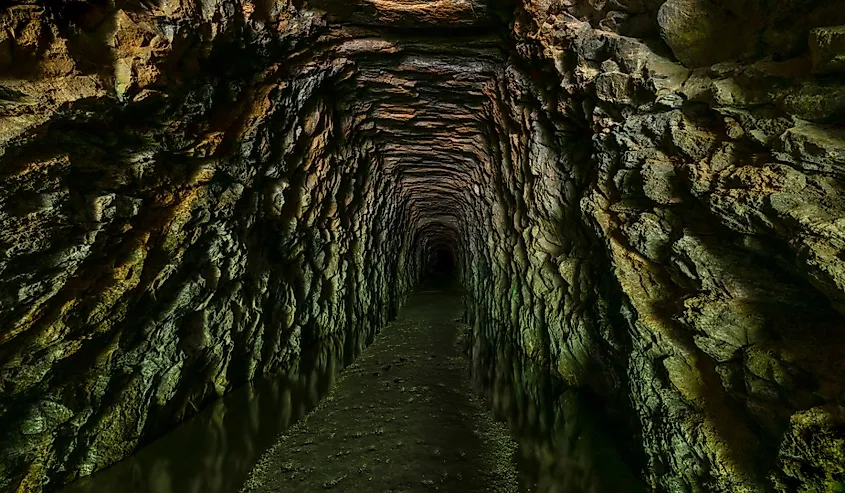
Stumphouse Tunnel is a marvel of engineering that was originally intended to connect Charleston to the Mississippi River through the Appalachian Mountains. Started by hand-digging in the 1800s, the tunnel was never completed due to the Civil War, but 1,600 feet (about a quarter-mile) of it remain in Oconee County for visitors to see and walk through today. It has been called a "tunnel to nowhere."
Today, it is surrounded by Stumphouse Park, a 440-acre park with falls and hiking trails. Stumphouse Tunnel maintains a constant temperature of 50 degrees Fahrenheit year-round. It had a practical use, too. For many years, Clemson University cured blue cheese inside the tunnel! Stumphouse Tunnel is on Stumphouse Tunnel Road, seven miles west of Walhalla, off South Carolina Route 28.
The Angel Oak, Charleston

Found on Johns Island near Charleston, the Angel Oak, also known as the Southern Live Oak, is a 500-year-old oak tree that stands 65 feet tall and is 25.5 feet around. It was present in 1717 when a land grant was made, and the tree was legally noted. The tree, which provides 17,000 square feet of shade, receives almost half a million visitors each year.
The Angel Oak has survived hurricanes, earthquakes, and floods and is still standing. The town of Charleston holds events at the Angel Oak year-round, such as the Spoleto Festival and the "Evening Under the Angel Oak" series, both featuring music and local artwork. The Angel Oak is located about 10 miles from Charleston's historic district on Angel Oak Road, Johns Island.
Pearl Fryar Topiary Garden, Bishopville

The Pearl Fryar Topiary Garden is a three-acre garden in Bishopville created by resident Pearl Fryar over a period of 20 years, starting in 1984. The self-taught topiary artist began creating topiary art with a gas-powered hedge trimmer and salvaged local plants after working 12 hours in a factory during the daytime. He created over 150 topiaries of all shapes and sizes which have received numerous awards and commendations over the years, as well as thousands of visitors annually.
In 2006, Fryar said, "I wanted to create a feeling, so that when you walk through here you feel different than when you came." The Pearl Fryar Topiary Garden is located off US Rt. 15 at Broad Acres Road in Bishopville.
Poinsett Bridge, Greenville County
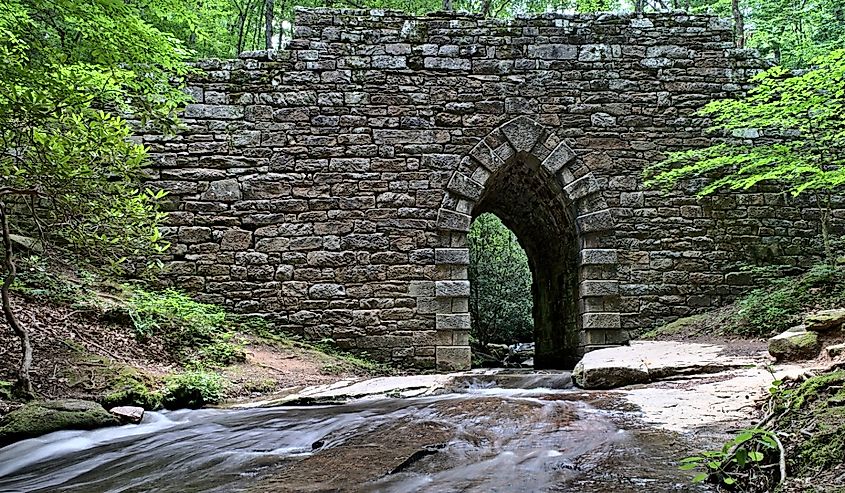
In Greenville County, between Spartanburg and Greenville, you will find Poinsett Bridge, the oldest surviving stone bridge in South Carolina. This arch bridge, believed to have been designed by architect Robert Mills, was built in 1820 and once was the only connection between Columbia and Saluda Mountain over the Little Gap Creek.
It is found within Poinsett Bridge Heritage Preserve, a 120-acre nature preserve filled with rare plant species, migratory songbirds, and five species of bats. Named for Charleston native and botanist Joel Roberts Poinsett, Poinsett Bridge is listed on the National Register of Historic Places. (Interestingly enough, the poinsettia was also named after him when he brought it to the US from Mexico). Poinsett Bridge is just off US Highway 25 in Landrum.
Old Sheldon Church Ruins, Beaufort County

Located on private property in Beaufort County, the Old Sheldon Church Ruins is owned and managed by St. Helena's Church in Beaufort. It is the ruins of Sheldon Church, once known as the Prince William Parish Church, which held its first service in 1757. It is one of the first churches built to resemble a Greek temple in the US. When it was built by William Bull, it was named Sheldon after his family's ancestral home in England. In 1779, the church was set on fire during the Revolutionary War. It was rebuilt from the remaining walls in 1826. During the Civil War, the church was burned again. The church was not rebuilt, and it is said that its insides were gutted by people after the Civil War looking for material to rebuild their homes.
The Old Sheldon Church Ruins are listed on the National Register of Historic Places. You may visit but may not climb on the ruins or grave markers, touch the ruins, or litter or deface the property. It can be found on Old Sheldon Church Road, near the intersection of US 17 and US 21 in Yemassee.
Strom Thurmond Monument, Columbia
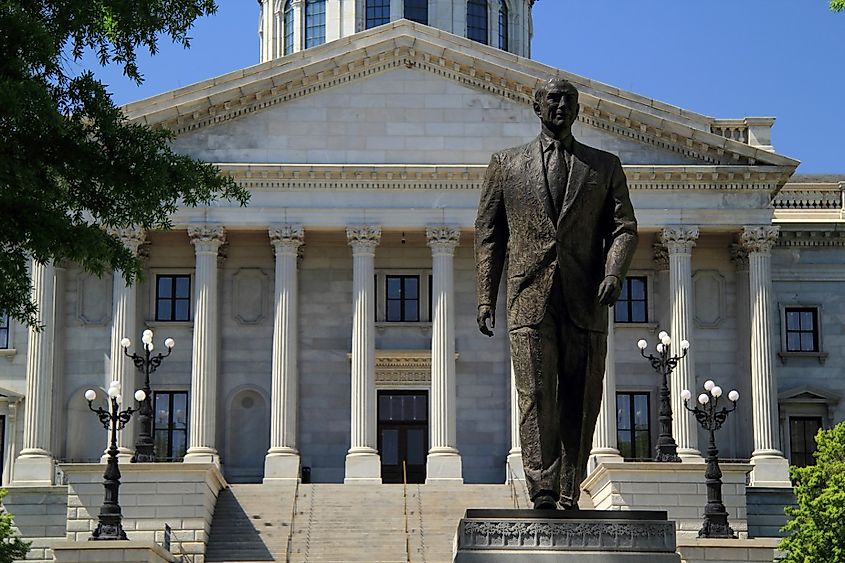
Strom Thurmond, the longest-serving and oldest US senator in American history, was from South Carolina. Hence, a nine-foot-tall bronze likeness of him stands at the State House in Columbia. The monument was designed by William Behrends in 1999. Thurmond was the first person in the US to win a major election by write-in ballot. He had 48 years of service when he died at age 100 in 2003.
As Thurmond was a steadfast segregationist, the existence of this monument has been questioned, but so far, it has not been taken down. It has been noted on the monument's base that Thurmond fathered five children, including a "secret" one by his family's young, black maid in 1925. You can see the Strom Thurmond monument for yourself at the State House on Gervais Street in Columbia.
Boneyard Beach, Beaufort

Located within Hunting Island State Park, just up the coast from Beaufort, Boneyard Beach is so named because of the endless number of shells that are constantly washing ashore, combined with skeletal trees, resembling a graveyard. The park also has 18 miles of hiking trails, and wildlife, including sea turtles, dolphins, alligators, and bald eagles, are often seen in the vicinity of the beach. Photographers will want to visit Boneyard Beach at sunrise for the best views.
Boneyard Beach is accessible from I-95, by taking the Highway 21 E exit towards Beaufort. You will need to drive 42 miles from there to reach Hunting Island State Park, where you can park in the South Beach lot.
South of the Border, Hamer
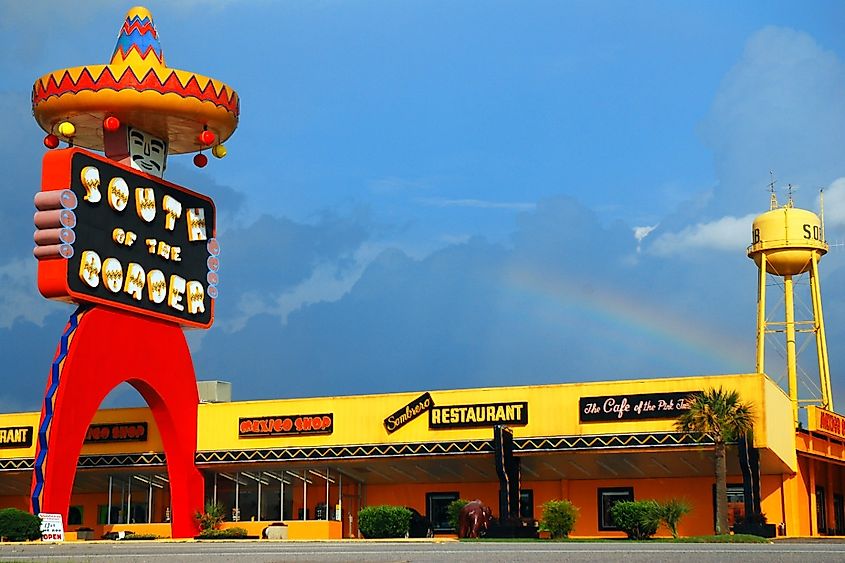
South of the Border is a world-famous landmark off I-95 and US 301 in Hamer. It was so named because it sits just south of the border with North Carolina and was once the halfway point of traveling by car from New York to Florida. Developed by Alan Schafer in 1950, South of the Border started as a beer depot, popular with travelers as North Carolina was dry at the time. A grill, motel, souvenir shop, cocktail lounge, and gas station were added a few years later. In 1962, fireworks sales were added, once again popular with travelers as they were illegal in North Carolina at the time. A drug store, variety store, barber shop, post office, and go-kart track were also added, as was the familiar statue of Pedro, the 104-foot mascot of South of the Border.
Whether you see South of the Border as a tourist trap or a much-needed travel rest stop, it cannot be denied that it is a strange landmark in the state and one that everyone should see at least once in their lives.
Besides being home to some of the best golf courses in the world and the birthplace of sweet tea, South Carolina houses some unusual landmarks. From tourist traps such as South of the Border to hauntingly beautiful natural features like Boneyard Beach, the state has many peculiar landmarks that are worth seeing. Take a drive to the Palmetto State to see these strange wonders for yourself.











